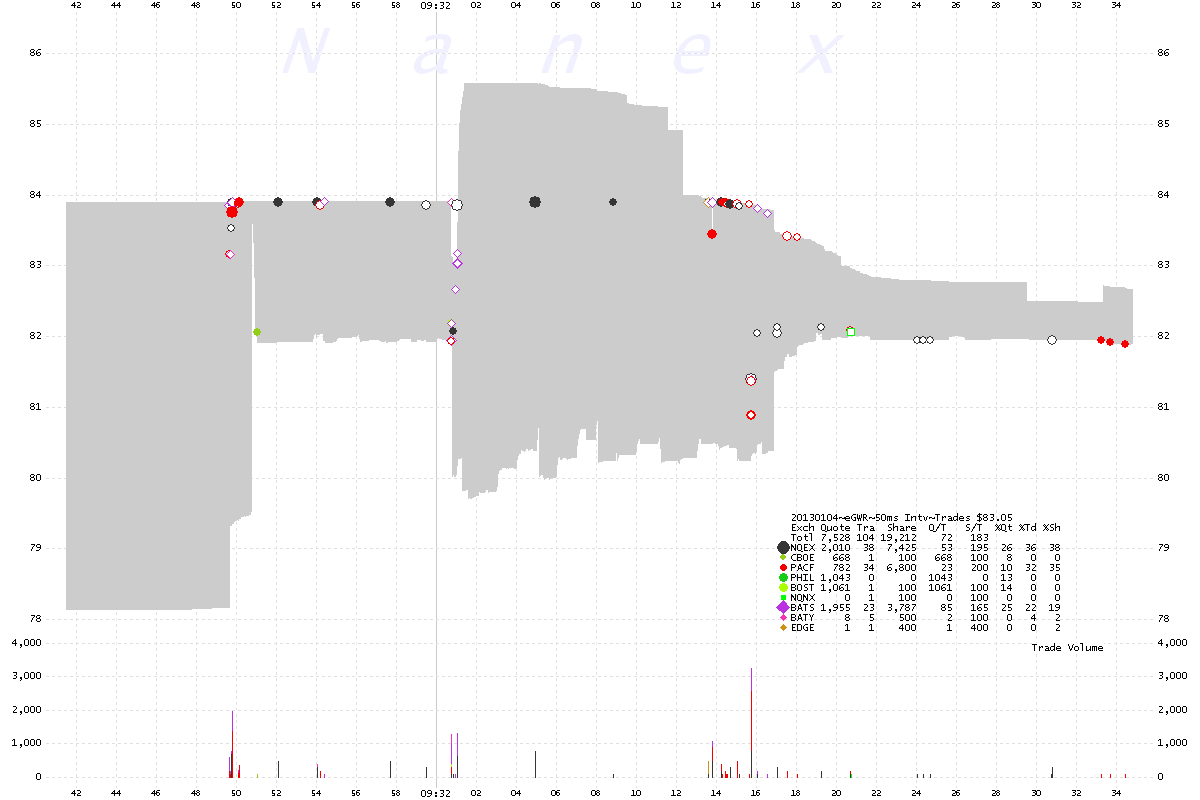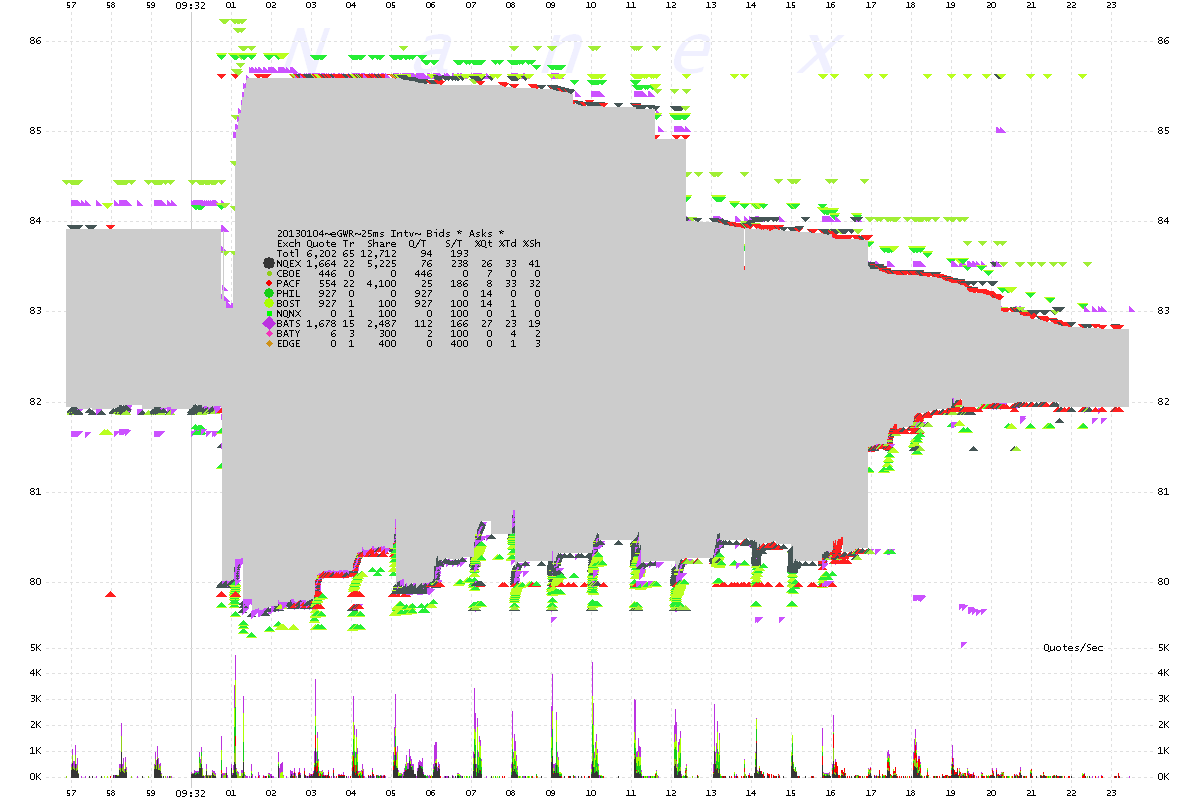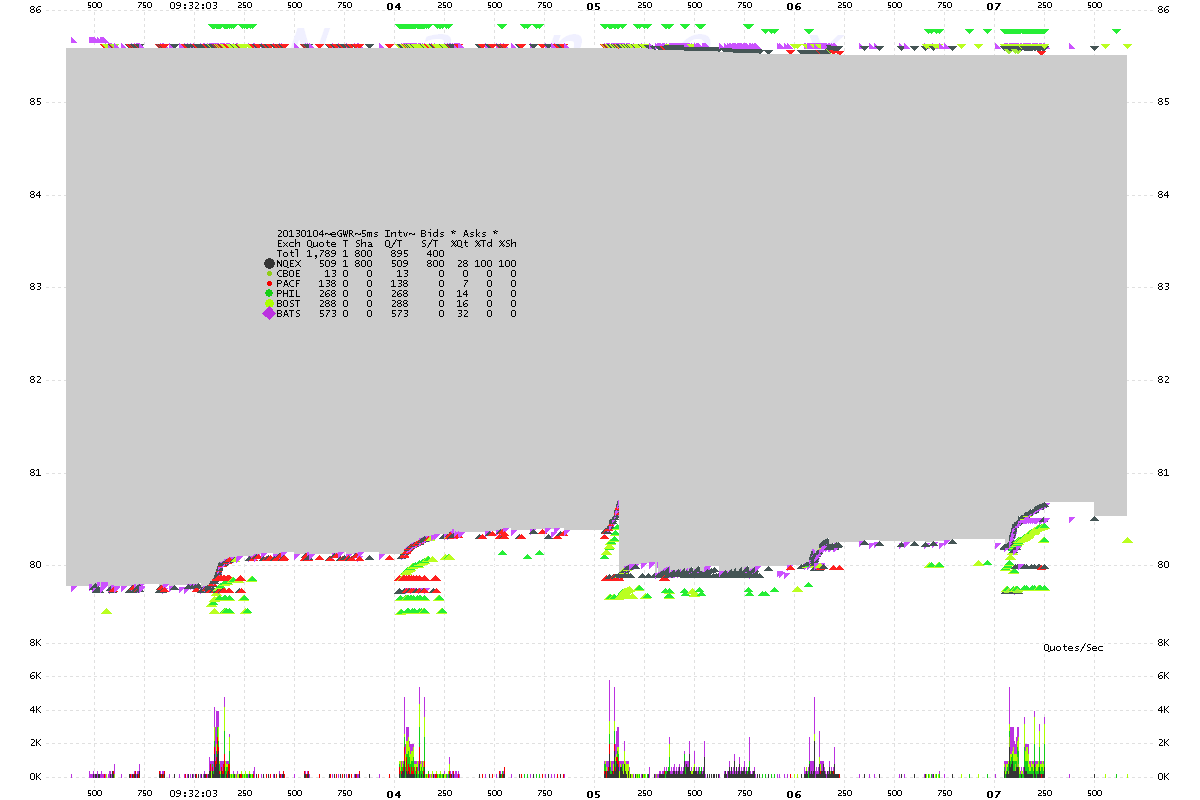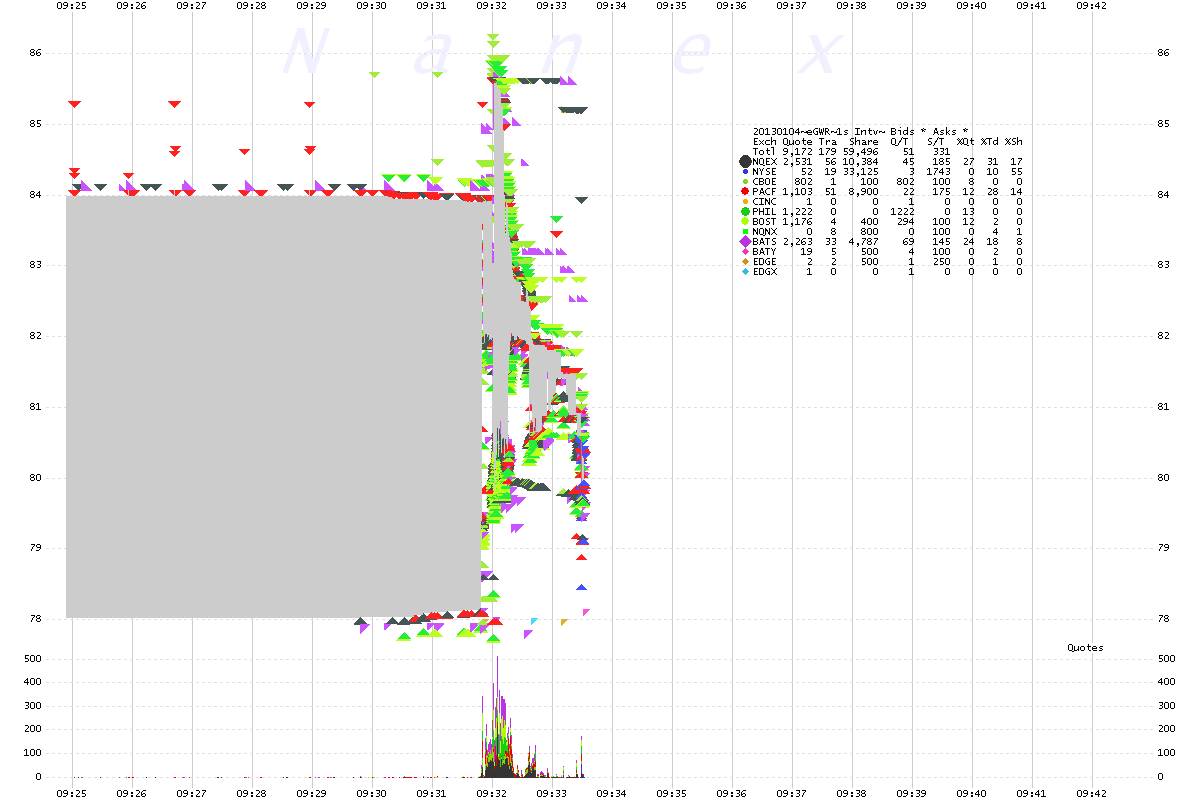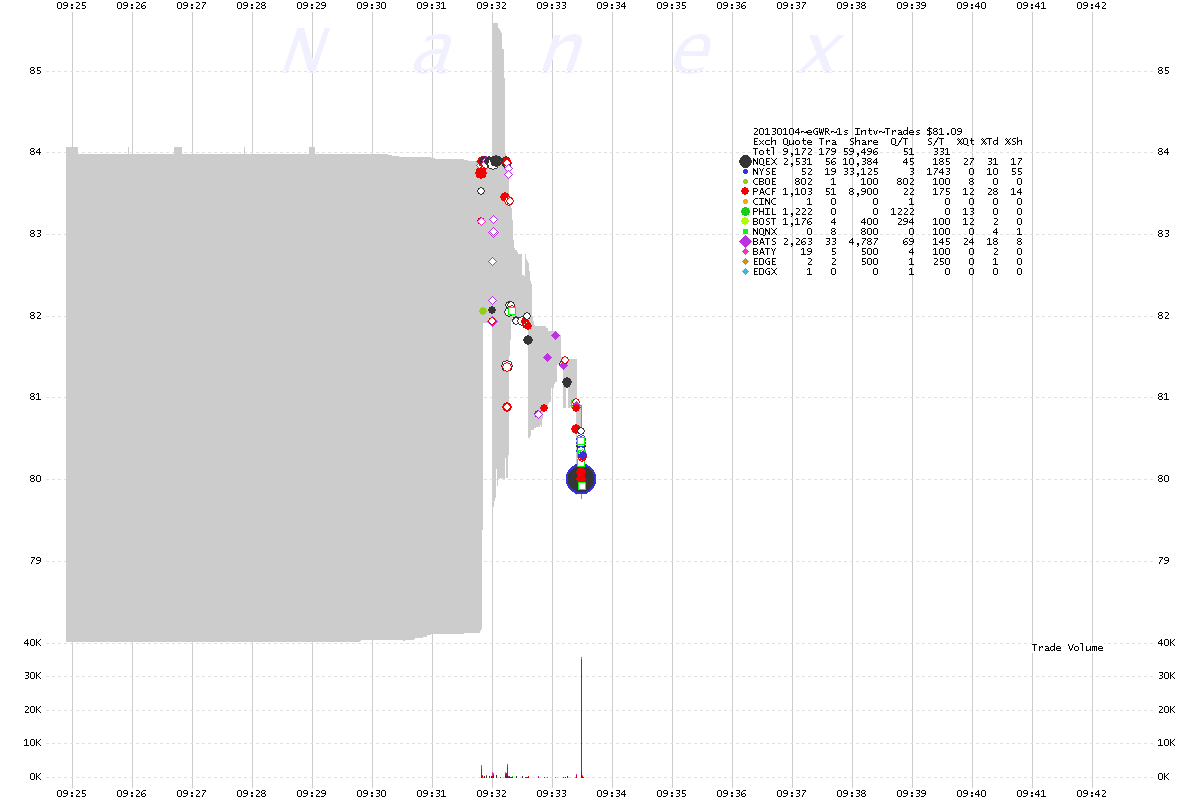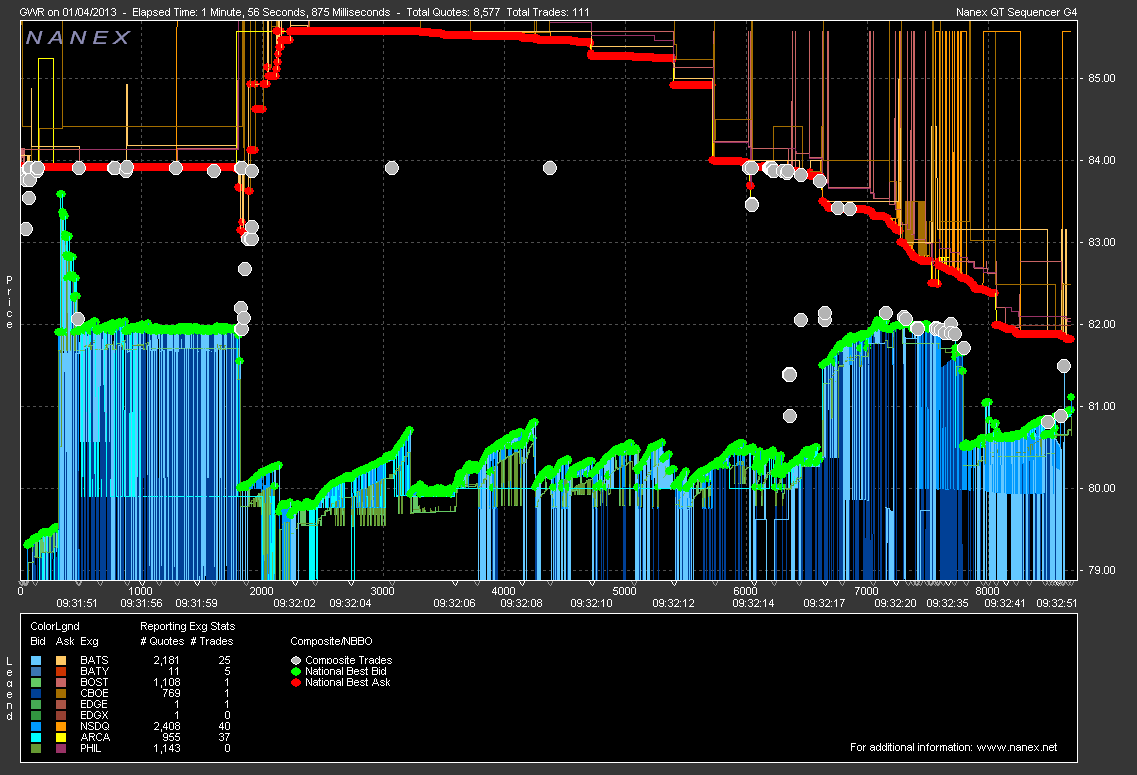
Nanex ~ 04-Jan-2013 ~ Seconds in a Microsecond WorldThe high frequency traders (HFT) are at it again. Contorting the spirit of the rules, because those who wrote the rules aren't technically savvy. On January 4, 2013, we found another instance of HFT morphing their manipulative and illegal quote stuffing strategy in an effort to fly under the radar. Why they don't just stop this manipulative practice altogether tells us a few things. First, this isn't some coding error, this is sophisticated cheating. And second, because they are spending valuable programming time on this strategy, there must be some real economic advantage. Which means a disadvantage to everyone trading against them.The StrategyEach exchange has been setting limits for the number of canceled orders allowed per second. We know that one exchange has a limit of 300 canceled orders per second per stock.. It's rare to find 300 or more canceled orders in one stock in any one second from that exchange. But you will find tens of thousands of seconds where a stock has 299 canceled orders.In the charts below, we show a new strategy they have cooked up: send a blast of orders (all immediately canceled) over a very short period of time, 100 milliseconds (ms) in this case, and then silence for the balance of the second. They know that exchanges measure the number of canceled orders on a per second basis, so that blast of orders sent in 100ms will be diluted by another 900ms of silence. But networks operate on a much smaller time-scale, microseconds. A microsecond is a millionth of a second. If an exchange sets a limit of 1000 canceled orders per second, these nefarious HFT will blast a 1000 orders in 100 milliseconds (ms), followed by silence for the balance of the second. The exchange will only see 1000 orders in a second, which is at the limit, so no problem. But the network that carries those orders to other participants won't see it that way. A network that can carry 1000 orders in a second, can carry only 1 order per millisecond (1/1000th of a second) before latency (delay) occurs. Which means blasting 1000 orders in 100ms will begin overloading the network and cause delays after just the first 100 messages. Which means 900 messages will arrive late to other traders (competitors) computers. Which is the whole point of this high technology warfare. |

